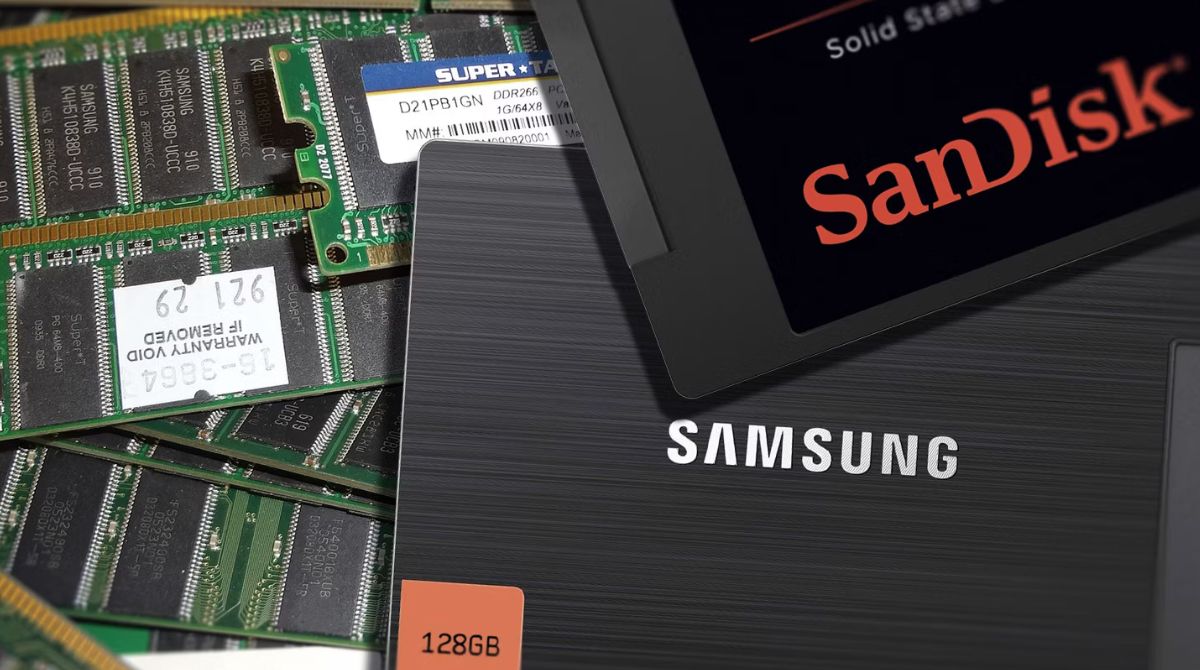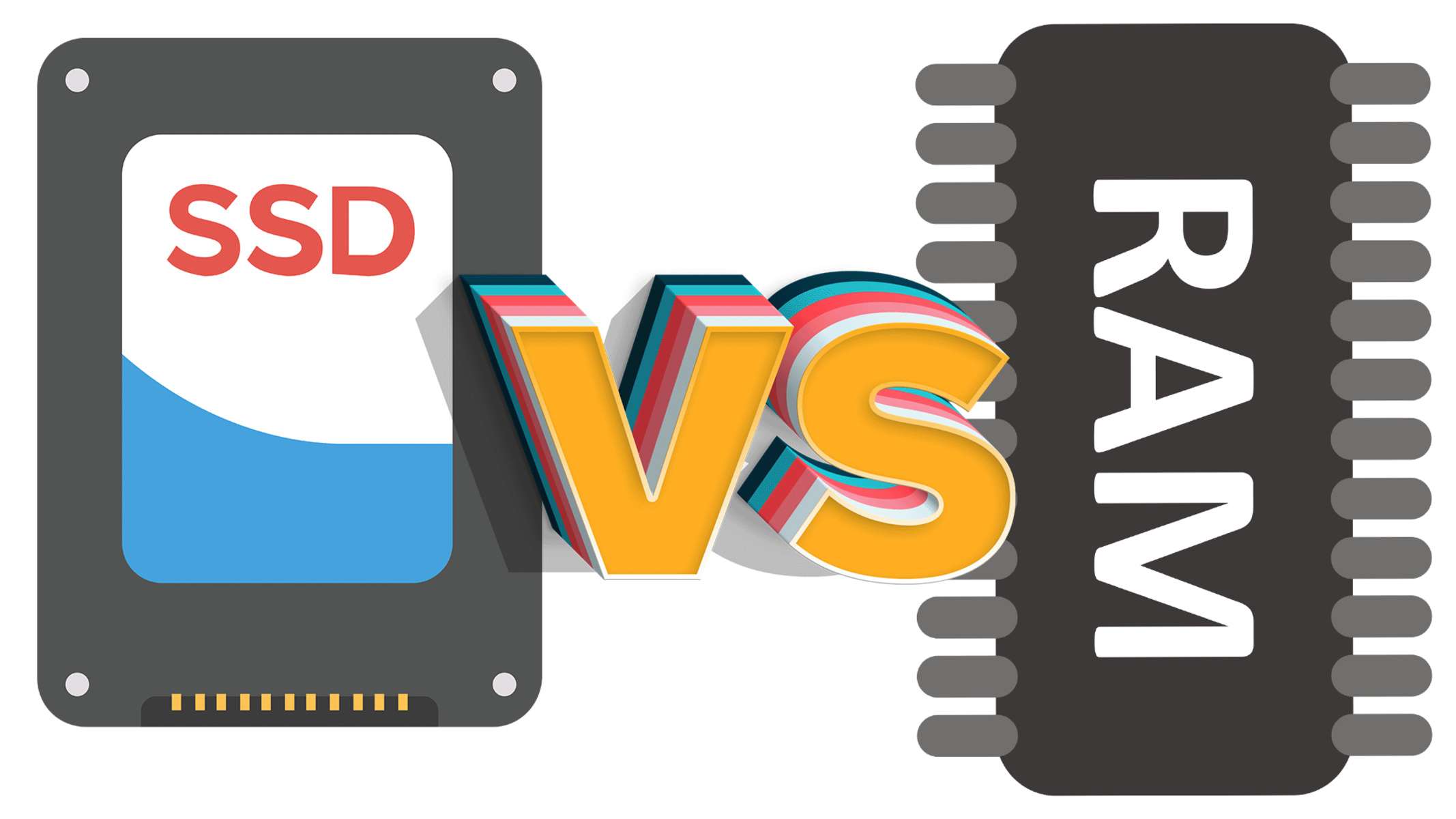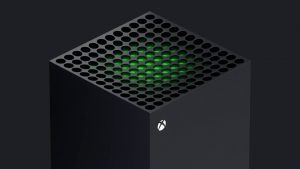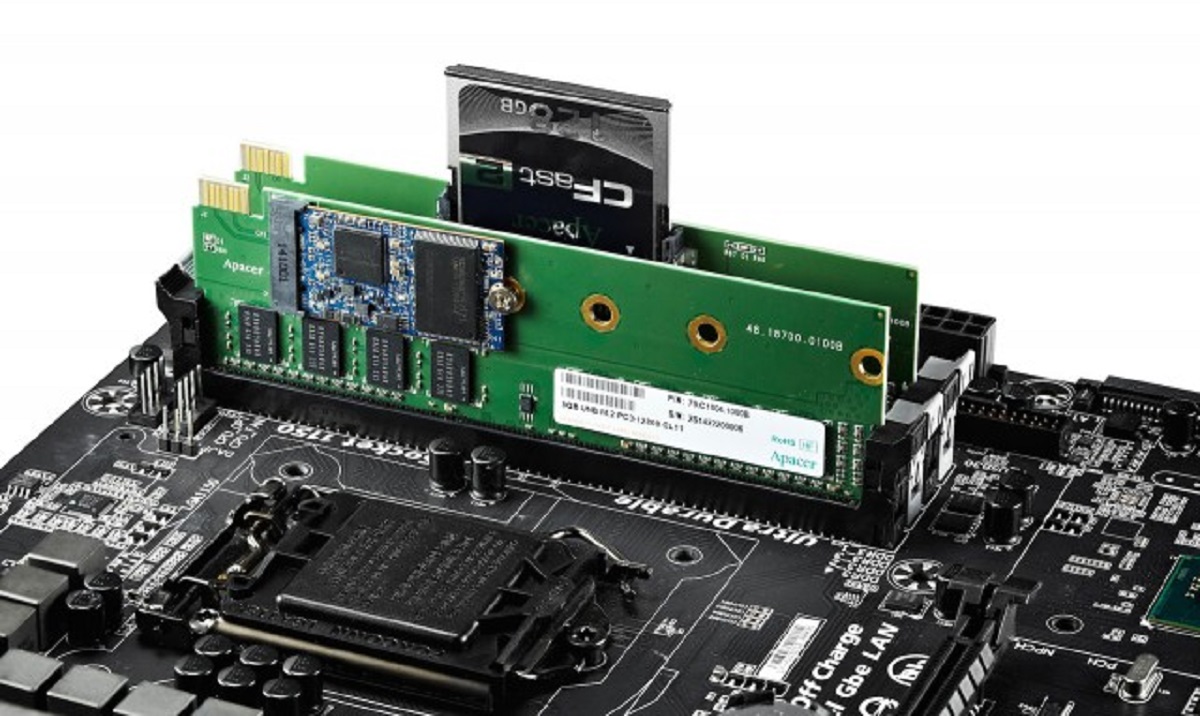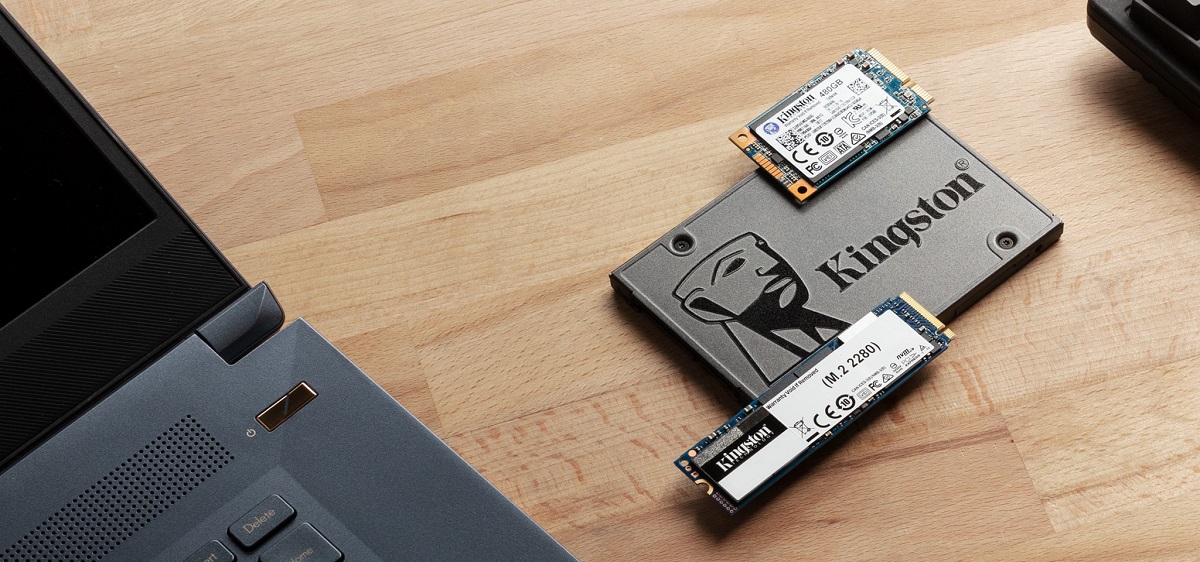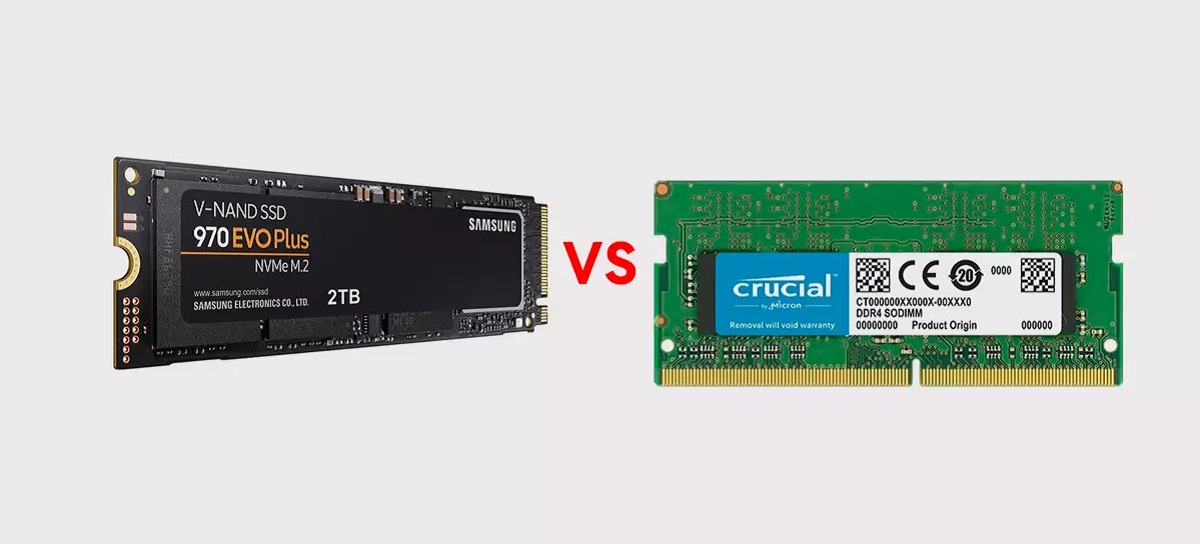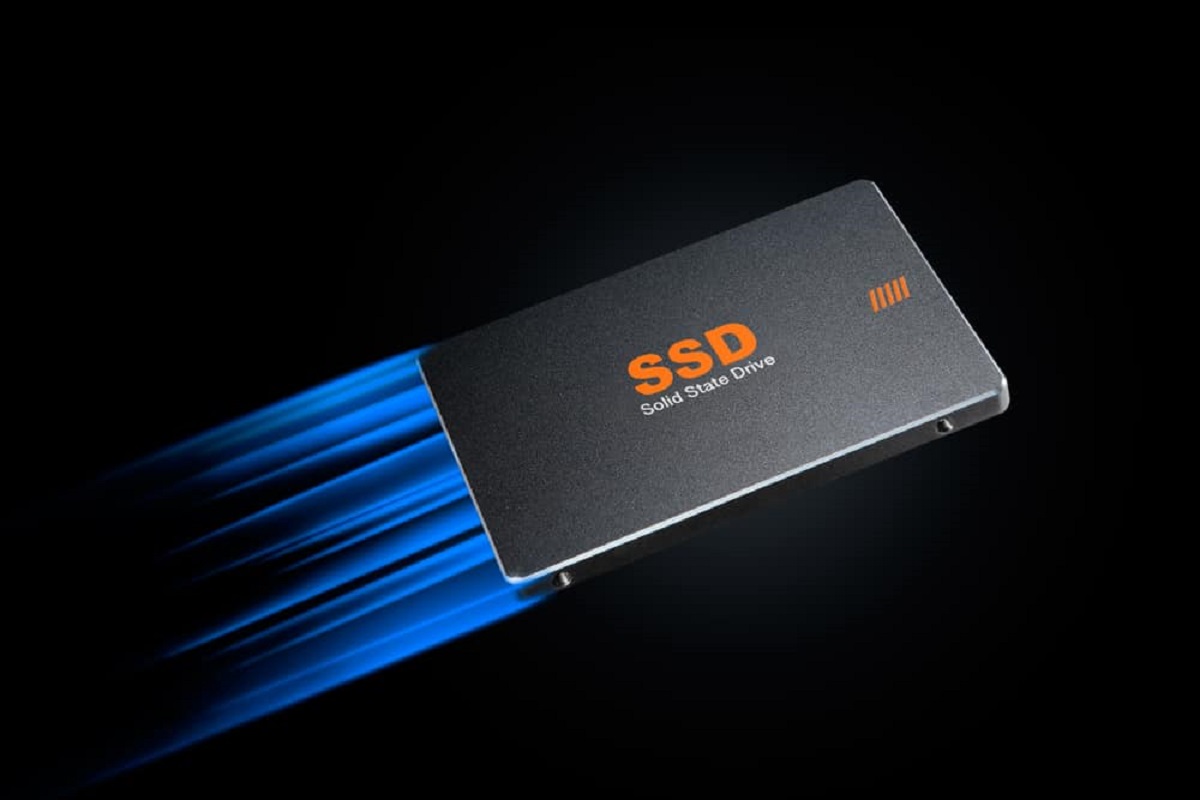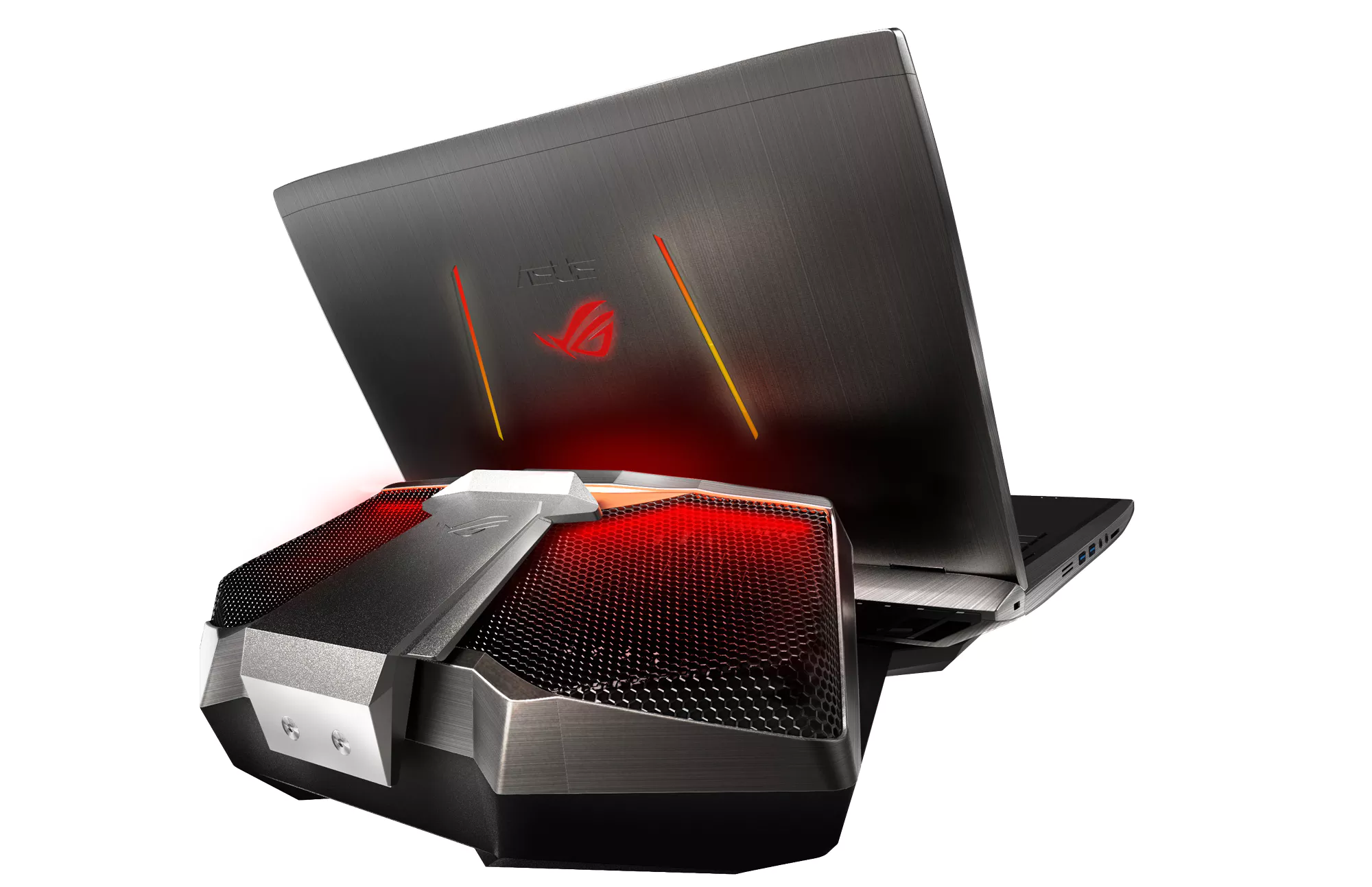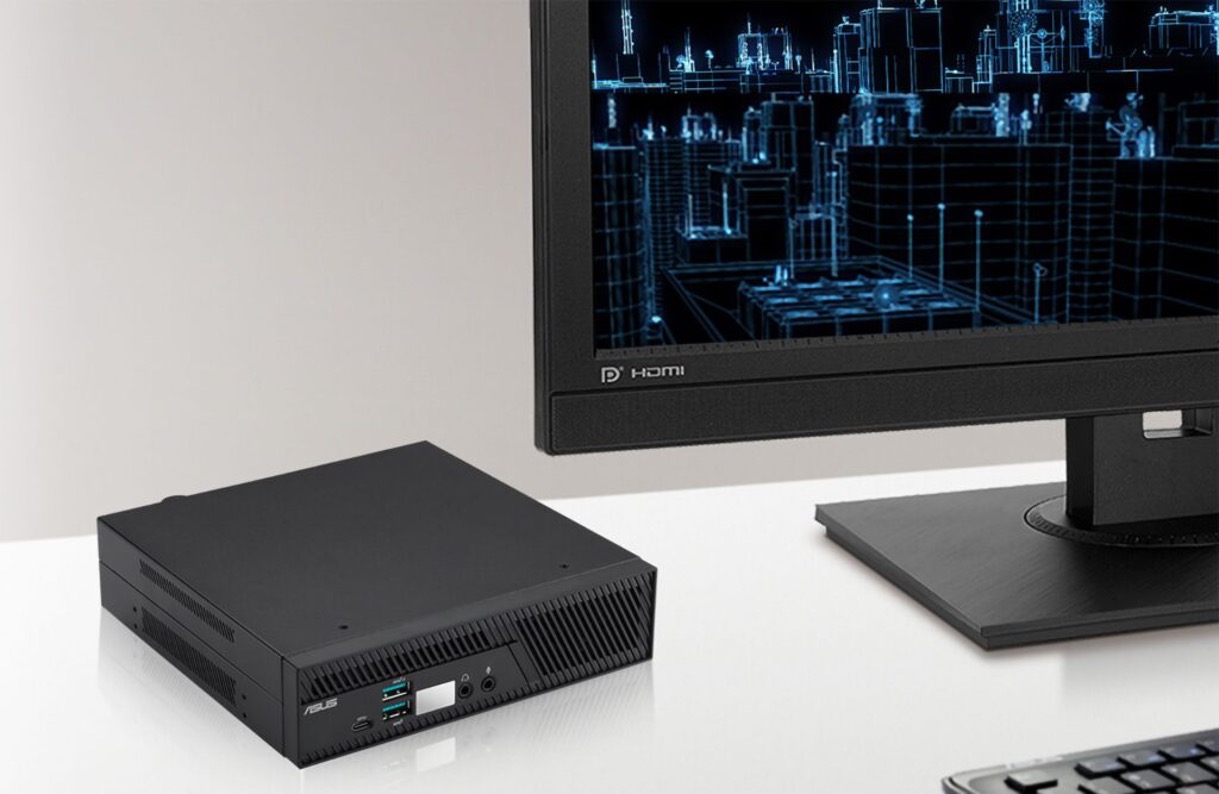Introduction
Welcome to the world of computer hardware, where the battle between RAM and SSD has been ongoing. Both RAM (Random Access Memory) and SSD (Solid State Drive) are crucial components of a computer system, but they serve different purposes and have unique characteristics. Understanding the differences between them is essential for making informed decisions when it comes to upgrading or purchasing a new computer.
RAM can be seen as the short-term memory of a computer. It is responsible for storing and accessing data that the computer needs for immediate use. When you open an application or program, it gets loaded into the RAM, allowing for faster data access and processing. This is why having sufficient RAM is crucial for multitasking and running memory-intensive programs smoothly.
On the other hand, SSD refers to the storage drive where your operating system, applications, and files are stored. Unlike traditional hard disk drives (HDD), which use spinning disks to store data, SSDs use flash memory chips, making them much faster and more reliable. The main advantage of an SSD is its ability to read and write data at lightning-fast speeds, significantly reducing boot-up and load times.
While both RAM and SSD are integral to a well-functioning computer, it’s important to understand the differences between them to determine which one is better suited for your needs. In this article, we will explore the various factors that set RAM and SSD apart, such as speed, storage capacity, power consumption, lifespan, and cost. By the end, you’ll have a clearer understanding of when to prioritize RAM and when to opt for an SSD.
What is RAM?
RAM, or Random Access Memory, is a type of computer memory that is responsible for temporarily storing and quickly accessing data that the computer needs to execute tasks. It is an essential component of a computer system as it directly affects its performance and efficiency.
Think of RAM as a workspace for your computer. When you open applications or programs, they get loaded into the RAM so that the CPU (Central Processing Unit) can access the necessary data and instructions quickly. The speed at which the CPU can retrieve data from RAM is significantly faster than accessing it from the hard drive, resulting in faster overall performance.
RAM is different from the permanent storage drives, such as SSDs or HDDs, as it is volatile memory. This means that once the power is turned off, the data stored in RAM is lost. However, it is important to note that RAM is not used for long-term storage of files or documents. Its primary function is to provide the CPU with immediate access to data required for running programs and operations.
RAM comes in different sizes, commonly referred to as memory capacities, such as 4GB, 8GB, 16GB, or even higher. The larger the RAM capacity, the more data it can store and the more applications you can run smoothly without experiencing performance issues.
Additionally, RAM also has different speeds, measured in megahertz (MHz) or gigahertz (GHz). Higher RAM speeds result in faster data transfer rates, allowing for quicker access to information. It is important to ensure that the RAM speed is compatible with the motherboard’s capabilities to achieve optimal performance.
In summary, RAM acts as a temporary storage space for data that the computer needs for immediate execution. It plays a crucial role in multitasking, running memory-intensive applications, and overall system performance.
What is SSD?
SSD, which stands for Solid State Drive, is a storage device used in computers and other electronic devices to store data. It differs from traditional hard disk drives (HDDs) in its technology and design, offering numerous advantages that have made it increasingly popular in recent years.
Unlike HDDs, which use spinning platters and mechanical read/write heads to access data, SSDs utilize flash memory chips to store and retrieve information. This flash memory consists of electrically erasable programmable read-only memory (EEPROM) cells that can retain data even when the power is turned off.
The absence of moving parts in SSDs makes them significantly faster and more durable compared to HDDs. They offer faster data transfer rates, resulting in quicker boot-up times, file access, and overall system responsiveness. With an SSD, you can expect applications to load almost instantaneously and a noticeable boost in your computer’s performance.
SSDs come in various form factors, including SATA (Serial ATA), M.2, and PCIe (Peripheral Component Interconnect Express). SATA SSDs are the most common and are compatible with standard SATA connectors found on most motherboards. M.2 and PCIe SSDs are more advanced, offering even faster data transfer speeds and supporting NVMe (Non-Volatile Memory Express) technology.
In terms of capacity, SSDs range from a few hundred gigabytes (GB) to several terabytes (TB), providing ample storage for operating systems, applications, and files. However, compared to HDDs, SSDs are generally more expensive per gigabyte of storage, which is something to consider when making a purchasing decision.
Another advantage of SSDs is their durability and reliability. Since there are no moving parts, SSDs are less susceptible to physical damage caused by shock or impact. They are also more resistant to temperature fluctuations, vibrations, and noise, making them ideal for portable devices or environments with harsh conditions.
In summary, SSDs are storage devices that use flash memory technology to store and access data quickly. They offer faster performance, increased durability, and a wide range of storage capacities, making them an excellent choice for those seeking improved system speed and efficiency.
Differences between RAM and SSD
RAM (Random Access Memory) and SSD (Solid State Drive) may both be important components of a computer system, but they serve different roles and have distinct characteristics. Here are some key differences between RAM and SSD:
- Function: RAM is responsible for temporarily storing and providing quick access to data that the computer needs to execute tasks, while an SSD is a storage device that holds the operating system, applications, and files for long-term use.
- Volatile vs Non-volatile: RAM is volatile memory, meaning that its data is lost when the computer is turned off. In contrast, SSDs are non-volatile as they retain data even without power.
- Speed: RAM offers faster speeds compared to SSDs. The CPU can access data from RAM at a much higher rate, resulting in faster execution of programs and multitasking. SSDs, however, are faster than traditional HDDs, providing quicker boot times and file access.
- Storage Capacity: RAM capacities are typically measured in gigabytes (GB) and are relatively limited compared to SSDs, which are available in larger capacities ranging from hundreds of gigabytes to multiple terabytes.
- Usage: RAM is crucial for running memory-intensive applications and multitasking. The more RAM you have, the smoother your computer will run when handling multiple programs simultaneously. SSDs, on the other hand, are ideal for storing the operating system, applications, and storing large amounts of data in a more permanent manner.
- Power Consumption: RAM consumes very little power as it operates at low voltage. SSDs are also more power-efficient compared to traditional HDDs because they have no moving parts, resulting in lower energy consumption.
- Lifespan: SSDs generally have a longer lifespan compared to RAM. While RAM modules can degrade over time, SSDs have a limited number of write cycles before they may start to experience failures. However, modern SSDs have improved durability and often come with warranties to ensure long-term reliability.
- Cost: RAM is more affordable per gigabyte compared to SSDs. SSDs tend to be more expensive, especially for larger capacities, making them a significant investment for storage needs.
Understanding the differences between RAM and SSD is crucial for making informed decisions when it comes to optimizing system performance and storage requirements. By considering the specific needs of your computing tasks, you can determine which component to prioritize and strike the right balance for your computer system.
Speed
When it comes to speed, both RAM (Random Access Memory) and SSD (Solid State Drive) play important roles in enhancing overall system performance, but in different ways.
RAM offers incredibly fast access speeds. It directly affects the speed at which the CPU (Central Processing Unit) can retrieve data, allowing for quick execution of programs and smooth multitasking. Since RAM is located close to the CPU, it can deliver data at a much faster rate compared to other storage devices. This means that the more RAM you have, the more data can be stored and accessed quickly, resulting in improved overall performance.
On the other hand, SSDs excel in terms of storage device speed. Compared to traditional hard disk drives (HDDs) with spinning disks, SSDs have no moving mechanical parts. This lack of physical movement allows for near-instantaneous data retrieval, resulting in faster boot times and quicker loading of applications and files. With an SSD, you’ll experience reduced latency and significantly improved read and write speeds, making your computer feel more responsive and agile.
It’s important to note that while SSDs offer faster speeds compared to HDDs, they are still slower than RAM. The reason behind this lies in the fundamental differences between RAM and SSD technologies. RAM offers almost immediate access to data, while SSDs rely on electronic signals and memory cell structures, which introduce some latency. However, SSDs are still significantly faster than HDDs and provide a noticeable improvement in performance compared to traditional storage drives.
When optimizing your system’s speed, it’s crucial to strike a balance between the amount of RAM and the use of an SSD. Increasing RAM can enhance multitasking capabilities and the overall responsiveness of your system. However, if you’re working with large file sizes or dealing with data-intensive tasks, having a fast SSD can greatly expedite processes such as data transfer and loading times.
Furthermore, it’s worth considering that the speed of RAM and SSD can also be influenced by other factors such as the motherboard, CPU, and the specific tasks being performed. It’s important to ensure compatibility between these components to achieve optimal performance.
In summary, RAM excels in providing lightning-fast data access to the CPU, making it ideal for seamless multitasking. SSDs offer faster storage speeds compared to traditional HDDs, improving overall system responsiveness. Balancing the amount of RAM and utilizing an SSD can help maximize your system’s speed and deliver an efficient computing experience.
Storage Capacity
When it comes to storage capacity, RAM (Random Access Memory) and SSD (Solid State Drive) serve different purposes and have distinct capabilities.
RAM is primarily a temporary storage space that is used by the computer to store data that it needs for immediate execution. RAM capacities are typically measured in gigabytes (GB) and range from a few gigabytes to several hundred gigabytes. While RAM is crucial for running applications, it has a limited storage capacity compared to other storage devices.
On the other hand, SSDs are designed for long-term storage of files, applications, and the operating system. SSD capacities have significantly increased over the years, ranging from relatively small capacities of 120GB or 240GB to larger capacities of 1TB, 2TB, or even higher. With an SSD, you have the flexibility to store a vast amount of data, including multimedia files, documents, and software installations.
It’s important to note that when it comes to storage capacity, SSDs typically offer much higher capacities than RAM. This is due to the fact that SSDs store data on flash memory chips, which can hold a large amount of information. However, it’s worth considering that the cost per gigabyte of storage is generally higher for SSDs compared to RAM. Therefore, it’s important to balance the need for storage capacity with budget constraints when making a decision between RAM and SSD upgrades.
Additionally, it’s crucial to understand that the storage capacity of RAM and SSD serve different purposes. RAM’s primary function is to provide quick access to data for processing, while SSDs are used for storing files and data for long-term use. It is important to have an adequate amount of RAM to ensure smooth multitasking and efficient program execution, while the size of the SSD should be determined based on the amount of data that needs to be stored and accessed on a regular basis.
In summary, RAM and SSD offer different storage capacities. RAM has a relatively limited capacity compared to SSDs, but it provides quick and temporary storage for immediate execution of tasks. SSDs, on the other hand, offer larger capacities and are designed for long-term storage of files, applications, and the operating system. Understanding the storage capacity requirements and balancing them with budget considerations is essential when considering upgrades or purchases.
Power Consumption
Power consumption is an important factor to consider when comparing the power usage between RAM (Random Access Memory) and SSD (Solid State Drive). Both components have different power requirements and consumption levels.
RAM consumes very little power compared to other computer components. It operates at low voltage, typically around 1.2V for DDR4 RAM modules. The low power consumption of RAM makes it an efficient component, allowing for longer battery life in laptops and lower electricity usage in desktop systems. Additionally, when the computer enters sleep or standby mode, RAM continues to consume a minimal amount of power to maintain data and allow for a quick return to normal operation.
On the other hand, SSDs are also known for their efficient power consumption. Compared to traditional hard disk drives (HDDs), which require the constant spinning of mechanical platters, SSDs have no moving parts, resulting in lower energy usage. In addition, SSDs utilize a flash memory technology that requires less power to read and write data compared to the physical actuation of mechanical components in HDDs. So, not only does an SSD boost system performance, but it also contributes to reducing power consumption and increasing energy efficiency.
Both RAM and SSD contribute to the overall power consumption of a computer system, but their impact is relatively low compared to other power-hungry components such as the CPU and graphics card. It is important to note that while RAM and SSD power consumption is low, adding more modules or increasing the capacity of each component can slightly affect the overall power consumption of the system. However, these differences are typically negligible unless operating in energy-restricted environments.
Considering power consumption is particularly crucial for portable devices such as laptops, tablets, and mobile devices, where battery life plays a significant role in usability. By optimizing the choice of RAM and utilizing an SSD, you can help extend battery life and ensure more efficient power usage.
In summary, both RAM and SSD have low power consumption compared to other computer components. RAM operates at low voltage and consumes minimal power, while SSDs, with their lack of moving parts, are more energy-efficient than traditional HDDs. By utilizing energy-efficient components, you can contribute to a more sustainable and power-efficient computing experience.
Lifespan
The lifespan of computer components is an important consideration when evaluating the longevity and reliability of RAM (Random Access Memory) and SSD (Solid State Drive). Both components have different characteristics and factors that can affect their lifespan.
RAM modules generally have a long lifespan when used under normal conditions. However, over time, the repeated use of RAM can result in wear and tear, which may lead to memory errors or failures. RAM modules can also be affected by factors such as heat, voltage fluctuations, or manufacturing defects that can impact their longevity. Nevertheless, reputable RAM manufacturers often provide warranties for their products, offering some assurance of reliability and coverage in case of defects or premature failure.
On the other hand, SSDs have a limited lifespan due to the nature of their flash memory technology. Each cell within an SSD has a finite number of write cycles before it can no longer reliably store data. This is known as the SSD’s endurance or program/erase (P/E) cycles. Modern SSDs, however, have implemented advanced features such as wear leveling algorithms and over-provisioning to distribute data writes evenly across the drive, extending their lifespan. Additionally, most reputable SSD manufacturers provide endurance ratings, indicating the expected total bytes written (TBW) that a drive can handle over its lifetime.
It’s important to note that for typical consumer or business use, the lifespan of SSDs is generally more than sufficient. Modern SSDs have significantly improved durability compared to previous generations, and their longevity is impacted by usage patterns, workload, and storage capacity. Higher-capacity SSDs tend to have higher endurance ratings compared to their lower-capacity counterparts.
Ultimately, both RAM and SSD are subject to wear and degradation over time, although the specific factors affecting their lifespan can vary. It is important to consider factors such as workload, temperature control, and regular system maintenance to maximize the lifespan of both components. Additionally, keeping backups of important data is crucial to mitigate the risk of data loss due to component failure.
In summary, RAM modules have a generally long lifespan, subject to normal wear and tear, while SSDs have a limited lifespan due to the finite number of write cycles of their flash memory cells. With proper usage and maintenance, both RAM and SSD can provide reliable performance for an extended period, but it is important to stay aware of the specifications and recommended usage guidelines provided by the manufacturers.
Cost
Cost is an important factor to consider when comparing the prices of RAM (Random Access Memory) and SSD (Solid State Drive). Both components have different cost considerations based on their functionality, capacity, and technology.
RAM is generally more affordable compared to SSDs in terms of cost per gigabyte. The price of RAM modules varies depending on factors such as capacity, speed, and generation (e.g., DDR3, DDR4). The cost of RAM has decreased over time, making it more accessible to consumers. However, as the capacity and speed of RAM increase, the price tends to rise accordingly.
On the other hand, SSDs generally have a higher cost per gigabyte compared to RAM. The cost of SSDs varies based on capacity, form factor (e.g., SATA, M.2), technology (e.g., TLC, QLC, MLC), and performance characteristics. SSD prices have also decreased over time as the technology has become more prevalent. However, SSDs with larger capacities or higher performance specifications, such as NVMe SSDs, tend to have a higher price tag.
When considering the cost of RAM and SSD, it’s essential to assess your specific needs and budget constraints. If your primary concern is boosting system performance and multitasking capabilities, investing in upgrading to a higher capacity RAM might be the most cost-effective option. On the other hand, if you require ample storage space and faster file access, an SSD would be more suitable, although it typically comes at a higher price point.
It’s worth noting that the specific cost of RAM and SSD can vary depending on the brand, model, and market conditions. Comparing prices from different vendors and considering factors such as customer reviews, warranty coverage, and after-sales support can help ensure that you are getting the most value for your money.
In summary, RAM generally has a lower cost per gigabyte compared to SSDs. However, the specific cost of both RAM and SSD can vary depending on their capacities, performance characteristics, and market conditions. Consider your specific needs, budget constraints, and the overall value proposition of each component to make an informed decision regarding cost.
When to Use RAM?
RAM (Random Access Memory) plays a crucial role in computer performance and multitasking capabilities. Here are some scenarios where using RAM becomes particularly important:
- Running Memory-Intensive Applications: RAM is essential for running memory-intensive applications such as video editing, 3D rendering, virtual machines, and gaming. These applications require a significant amount of RAM to ensure smooth performance without encountering slowdowns or crashes.
- Multi-tasking: If you regularly work with multiple applications simultaneously, having sufficient RAM is crucial. RAM allows the operating system to keep a larger number of programs and processes in memory, enabling you to switch between tasks smoothly and without significant performance degradation.
- Browsing and Web Experience: Modern web browsing can be resource-intensive, especially with multiple tabs and media-rich content. Having ample RAM enables your browser to cache web pages and data, resulting in faster load times and a smoother browsing experience.
- Content Creation: If you’re involved in content creation activities such as graphic design, photo editing, or music production, RAM is vital. These activities often involve working with large file sizes and memory-intensive software, so having enough RAM ensures efficient workflow and prevents lag or crashes.
- Virtualization: If you are running virtual machines for testing, development, or other purposes, RAM is critical. Each virtual machine requires dedicated memory resources, so having sufficient RAM allows for the smooth operation of multiple virtual machines simultaneously.
- Operating System Optimization: Upgrading the amount of RAM can significantly enhance the performance of the operating system. With more RAM available, the operating system can load and store frequently accessed files, resulting in reduced system lag and faster overall performance.
In summary, RAM is crucial in scenarios where you need to run memory-intensive applications, multitask with multiple programs, enhance web browsing experience, engage in content creation activities, utilize virtualization, or optimize the performance of the operating system. Assessing your computing needs and prioritizing ample RAM capacity will ensure smooth and efficient system performance in these situations.
When to Use SSD?
An SSD (Solid State Drive) brings several benefits to computer systems, making it ideal in various scenarios where speed, reliability, and efficient storage are crucial. Here are some situations where using an SSD is particularly advantageous:
- Operating System and Application Installation: Installing the operating system and applications on an SSD significantly boosts overall system performance. The faster read and write speeds of an SSD result in quicker boot times, faster application launches, and improved system responsiveness.
- Fast File Access: If you frequently access and work with large files, such as high-definition videos, RAW photos, or complex CAD files, an SSD is invaluable. Files stored on an SSD can be retrieved and opened much faster, resulting in reduced loading times and improved productivity.
- Gaming: Gamers benefit greatly from an SSD due to faster loading times in games. It reduces the waiting time during game startup and level loading, providing a seamless gaming experience with reduced lag and fewer performance hiccups.
- Content Creation and Editing: Video editing, audio production, and graphic design software often require quick access to large media files. With an SSD, tasks such as rendering videos or editing high-resolution images become noticeably faster, enabling smoother workflows with minimal delays.
- Portable and Mobile Devices: SSDs are highly suitable for portable devices like laptops, tablets, and ultrabooks. They are more resistant to physical shocks and vibrations compared to traditional hard drives, making them more reliable and durable for on-the-go use.
- High-Performance Computing: In scenarios where speed is crucial, such as scientific simulations, rendering farms, or database servers, using SSDs as primary storage can significantly improve processing and data access times, resulting in faster analysis, data retrieval, and computational efficiency.
By adopting an SSD in these scenarios, you can enjoy faster startup times, quicker application launches, reduced file loading times, improved productivity, enhanced gaming performance, increased durability for portable devices, and efficient data access in high-performance computing environments.
It’s important to note that SSDs are generally more expensive per gigabyte compared to traditional hard drives (HDDs). Therefore, adopting an SSD primarily for the operating system, frequently used applications, and files that require speedy access is a cost-effective approach.
In summary, SSDs are particularly suitable in situations where speed, reliable storage, and efficient performance are essential. These include operating system and application installations, fast file access, gaming, content creation and editing, portable and mobile devices, and high-performance computing environments.
Conclusion
RAM and SSD are crucial components of a computer system, each with its own unique characteristics and contributions to performance. While RAM provides temporary storage for data that the CPU needs for immediate execution, SSDs offer permanent storage for the operating system, applications, and files. Understanding the differences between these components is essential to make informed decisions regarding system upgrades or purchases.
RAM is essential for multitasking, running memory-intensive applications, and improving overall system performance. It offers fast access speeds and allows for smooth execution of tasks. Increasing the amount of RAM can lead to smoother multitasking, reduced program lag, and a more responsive computing experience.
SSDs, on the other hand, excel in providing fast storage and quick data access. They significantly improve boot times, file loading, and overall system responsiveness. SSDs are highly beneficial for scenarios that require efficient storage, such as operating system installations, content creation, gaming, and high-performance computing.
When considering RAM and SSD, factors such as speed, storage capacity, power consumption, lifespan, and cost come into play. RAM offers faster access speeds and is crucial for multitasking, while SSDs provide larger storage capacities and faster storage performance. Both components have low power consumption, with RAM consuming minimal power and SSDs being more energy-efficient compared to traditional hard drives.
RAM generally has a lower cost per gigabyte compared to SSDs, making it more budget-friendly. SSDs typically have a higher initial cost, but they offer improved performance, durability, and energy efficiency, making them a valuable investment for speed and reliability.
In conclusion, choosing between RAM and SSD depends on your specific needs. If you require enhanced multitasking capabilities, smoother program execution, or improved system responsiveness, prioritize investing in sufficient RAM. If you seek faster storage performance, reduced boot times, and efficient file access, an SSD is the way to go. Striking the right balance between RAM and SSD will help optimize your system performance and deliver an efficient and enjoyable computing experience.







